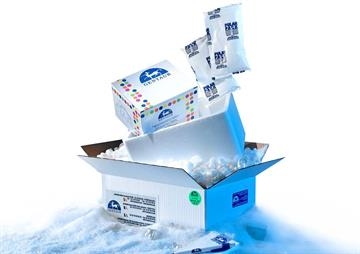IL-2 Recombinant Protein

IL-2 Recombinant Protein
1012.45 EUR
In Stock
quantity
Produktdetaljer
Katalognummer: 223 - 92-521
Produktkategori: Företag och industri > Vetenskap och laboratorium
ProSciGentaur
Storlek: 0.05 mg
Related Products
91-552
HAI-2 Recombinant Protein
Hepatocyte Growth Factor Activator Inhibitor Type 2 (HAI2) is a single-pass type I membrane protein and contains two BPTI/Kunitz inhibitor domains. The first Kunitz domain is mainly responsible for the inhibitory activity against hepatocyte growth factor activator (HGFA). HAI2 is expressed in placenta, kidney, pancreas, prostate, testis, thymus and trachea. HAI2 serves as a inhibitor of HGF activator. It also inhibits plasmin, plasma and tissue kallikrein and factor XIa. Defects in HAI2 are the cause of diarrhea type 3 (DIAR3), also known as congenital sodium diarrhea (CSD).
1106.95 €
91-555
Vanin-2 Recombinant Protein
Vascular Non-Inflammatory Molecule 2 (VNN2) is a member of the CN hydrolase family. The family includes secreted and membrane-associated proteins, a few of which have been reported to participate in hematopoietic cell trafficking. they possess pantetheinase activity, which may play a role in oxidative-stress response. VNN2 is a GPI-anchored cell surface molecule that plays a role in transendothelial migration of neutrophils. VNN2 involved in the thymus homing of bone marrow cells. In addition, VNN2 may regulate beta-2 integrin-mediated cell adhesion, migration and motility of neutrophil.
1106.95 €
91-653
Protamine-2 Recombinant Protein
Ribonucleoside-Diphosphate Reductase Subunit M2 (RRM2) belongs to the ribonucleoside diphosphate reductase small chain family. The reductase of RRM2 catalyzes the formation of deoxyribonucleotides from ribonucleotides. Synthesis of the encoded protein (M2) is regulated in a cell-cycle dependent fashion. RRM2 supplies the precursors essential for DNA synthesis. RRM2 catalyzes the biosynthesis of deoxyribonucleotides from the corresponding ribonucleotides. Phosphorylation on Ser-20 relieves the inhibitory effect on Wnt signaling.









